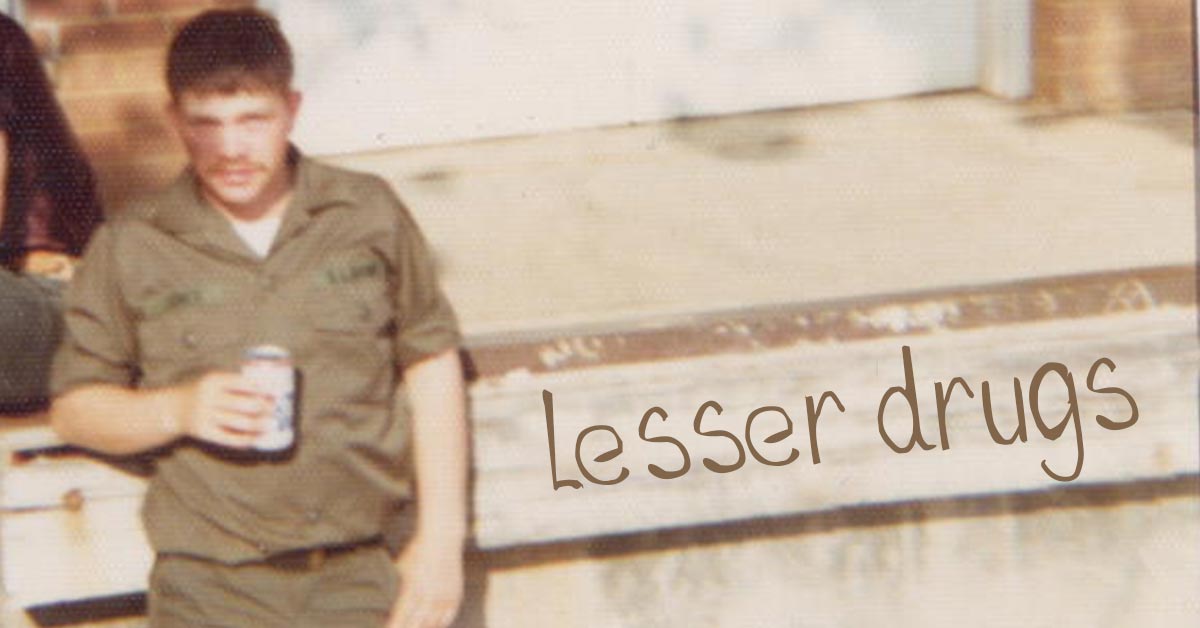
Commentary: Lesser Drugs
LESSER DRUGS
uncle Casey made me laugh so hard,
when I was a kid,
I’d cry.
one time we were laughing
I couldn’t even breathe.
another time, in the truck,
we made Grandpa mad:
“Dammit, I’m tryna’ drive”
(but pretty soon he
was laughing too)
Casey.
he showed me treasures of humor
and joys hidden all around,
and happiness I didn’t even know,
at that young age,
could be found.
he got married.
became a dad.
one night he got high
(I think it was cocaine).
hung himself.
died.
I was only a boy.
I didn’t understand
(I still don’t).
there’s no way cocaine
could feel like we felt
when we were laughing,
side-by-side,
in the front seat
of grandpa’s truck.
there’s no drug like us.
if I could go back
I’d demand answers
and
I wouldn’t even laugh
until I was
satisfied.
. . .
In November of 1978, the army called Uncle Casey to Fort Bragg and loaded his unit onto a plane, with little detail about their journey. After 6 hours of flying they unloaded in Guyana, then re-loaded into helicopters.
In the air over the jungle they were told they were on a clean-up and recovery mission. Specifically, members of an American cult had committed suicide, and the bodies needed to be collected and brought back to the U.S.
As the chopper descended into Jonestown, they could already smell death.
A field of bodies lay limp and bloated in the jungle humidity, while endless intoxicated flies raved on the macabre scene.
The only voice that spoke came from the officer giving commands. Casey, and his fellow soldiers, moved mute through the horror.
In the end, over 900 bodies were bagged, boxed, and shipped back to the U.S., including men, women, and many children.
Casey said he didn’t remember talking, or hearing any of his fellow soldiers speak, until long after returning to Fort Bragg.
The suicide involved drinking cyanide-laced Kool-Aid (all under gunpoint, to ensure everyone would drink it). We get the phrase “drinking the Kool-Aid” from this event, which we use to refer to people with a lunatic loyalty to some crazy idea or ideology.
But the victims of Jonestown, excluding Jones himself and his circle of leaders, did not seem crazy at all. Most of Jones’s victims were idealistic souls, hungry for economic and racial reconciliation. They threw themselves into creating a community marked by equality & peace.
Anyway, I’ve been thinking about Casey, recovering those bodies, and what that must’ve done to his psyche. He was never the same after. I was not even 5 years old when Jonestown went down, but I remember Casey making everyone laugh, and how he overflowed with joy and good spirit.
After Jonestown, his affect progressively decompensated. I’m sure there was more to it, but, man, I wish I could talk to him about it. I wish I could get a glimpse inside his head, hear his perspective, and maybe give him an outlet to express himself.
But I can’t.
He committed suicide in 1992.
From my second collection The Fundamentals of Skywriting, which you can get for a short while longer here: The Fundamentals of Skywriting
. . .
Dan Kent